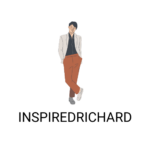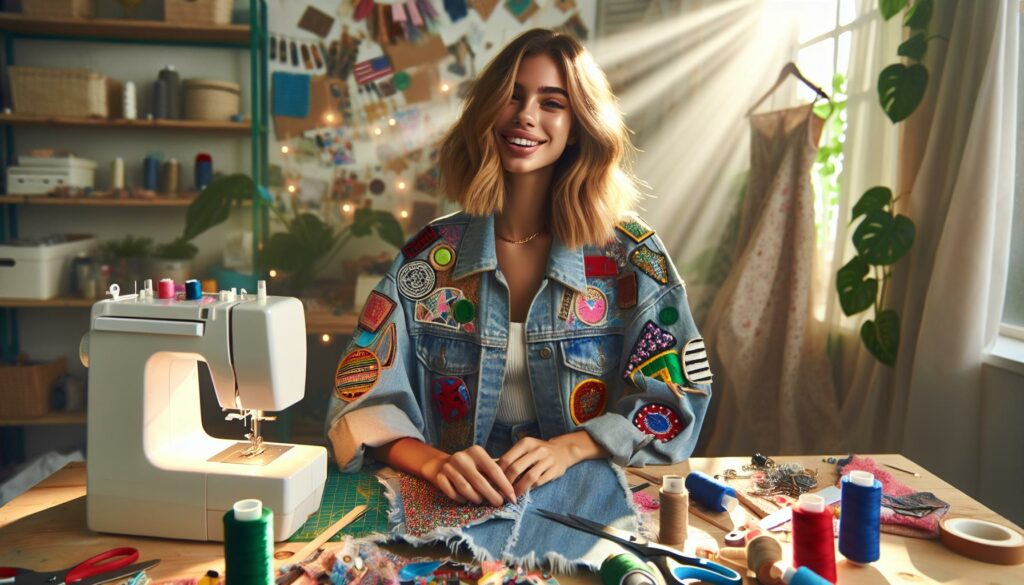I’ve always believed that fashion should be both stylish and sustainable. That’s where DIY upcycled fashion projects come in. They not only breathe new life into old clothes but also let me express my creativity while reducing waste. With a little imagination and some basic skills, I can transform forgotten pieces into trendy, one-of-a-kind outfits.
In this journey of upcycling, I find joy in the process of reinventing what I already have. Whether it’s turning a pair of jeans into a chic bag or revamping a vintage dress, the possibilities are endless. Join me as I explore some exciting DIY upcycled fashion projects that not only elevate my wardrobe but also contribute to a more sustainable future.
- Sustainable Fashion: DIY upcycled fashion projects are a creative way to make stylish clothing while minimizing waste and promoting sustainability.
- Financial Benefits: Upcycling can save up to 80% compared to purchasing new clothes, allowing for a personalized wardrobe without breaking the bank.
- Creative Expression: These projects encourage personal expression by transforming old garments into unique, one-of-a-kind items, enhancing individual style.
- Environmental Impact: Engaging in upcycling helps reduce textile waste, significantly lowering the demand for new materials and decreasing the overall environmental footprint.
- Diverse Techniques: Various methods such as sewing, dyeing, and patchwork can be employed to create a wide array of stylish upcycled pieces, catering to different skill levels.
- Community Engagement: Joining upcycling communities provides inspiration, collaboration opportunities, and the chance to share innovative ideas, fostering a supportive environment for sustainable fashion endeavors.
DIY Upcycled Fashion Projects
DIY upcycled fashion projects merge creativity with sustainability, allowing me to transform unwanted garments into stylish outfits. Each project highlights the potential of repurposing fabrics, reducing waste while fostering personal expression. These projects cover various techniques, from simple alterations to complex creations, accommodating different skill levels.
Upcycling encourages critical thinking about consumerism and the lifecycle of clothing. It empowers me to make fashion choices that reflect my personality while contributing to a sustainable future. By reimagining old items, I not only save money but also minimize my environmental footprint.
Here are some popular projects to consider:
- T-shirt Bags: Create reusable tote bags from old t-shirts. This simple process requires only scissors and a few knots.
- Denim Jackets: Transform worn denim into trendy jackets. Adding patches or embellishments enhances the look, making it unique.
- Sweater Mittens: Convert an old sweater into cozy mittens. This project keeps hands warm while repurposing fabrics.
- Patchwork Quilts: Combine remnants of various fabrics to make a stylish quilt. This project allows for endless combinations and creativity.
- Recycled Jewelry: Use broken accessories to craft new jewelry pieces. This recycling effort highlights creativity and resourcefulness.
These DIY upcycled fashion projects offer an exciting way to revive my wardrobe while promoting sustainability. Exploring these ideas can help me make a meaningful impact through fashion.
Benefits Of Upcycling Fashion
Upcycling fashion projects present significant advantages that extend beyond personal creativity. These benefits encompass environmental, economic, and social aspects, contributing to a more sustainable approach to clothing.
Environmental Impact
Upcycling fashion drastically reduces textile waste. According to the Environmental Protection Agency, around 11 million tons of textile waste end up in landfills each year. By choosing to upcycle old garments, I divert materials from landfills, decreasing the volume of waste produced. Upcycling also lowers water and energy consumption associated with new clothing production. It takes approximately 1,800 gallons of water to produce a single pair of jeans. Engaging in upcycling mitigates these environmental strains by reusing existing resources and minimizing the demand for new materials.
Economic Savings
Upcycling fashion leads to significant economic benefits. I save money by transforming old clothes into stylish outfits instead of purchasing new ones. For instance, buying a trendy upcycled bag can cost only a fraction of a brand-new designer bag. On average, individuals can save 80% by upcycling compared to buying new clothing. Additionally, upcycled pieces often hold greater unique value since they are one-of-a-kind creations. Embracing these projects empowers me to craft a personalized wardrobe that reflects my style while saving money.
Popular DIY Upcycled Fashion Projects
Exploring DIY upcycled fashion projects reveals countless creative opportunities. Below are popular categories that highlight innovative transformations and stylish accessories.
Clothing Transformations
Clothing transformations breathe new life into outdated garments.
- T-Shirt Bags: Turn old t-shirts into functional bags for grocery trips or casual outings.
- Denim Jackets: Revamp worn jeans into trendy jackets. Use patches or fabric paint for a personalized touch.
- Sweater Mittens: Convert unwanted sweaters into cozy mittens. Cut and sew the fabric to fit your hands comfortably.
- Patchwork Quilts: Combine scraps from various clothing items to create unique quilts. This project emphasizes creativity and sustainability.
- Skirt to Dress: Transform a long skirt into a chic summer dress. Add straps or an elastic band for additional support.
Accessories and Jewelry
Accessories and jewelry projects enhance outfits while providing an eco-friendly element.
- Recycled Jewelry: Craft necklaces and bracelets from old buttons, beads, or metal pieces. This allows for endless customization.
- Fabric Hair Scrunchies: Repurpose extra fabric from old clothing into stylish scrunchies. This simple project is functional and trendy.
- Upcycled Belts: Transform old ties into fashionable belts. Simply sew the ends together and add embellishments for flair.
- Earring Designs: Create unique earrings from recycled materials, like bottle caps or wire. Experiment with colors and shapes for a standout style.
- Brooches from Pins: Use old brooches or pieces of jewelry to create something distinctive. Combine multiple pieces for a bold statement accessory.
Tools And Materials Needed
To embark on DIY upcycled fashion projects, having the right tools and materials is crucial. Below are the essentials needed for a successful upcycling experience.
Basic Tools
- Scissors: Sharp scissors cut through fabric easily, enabling precision for clean edges.
- Sewing Machine: A reliable sewing machine saves time and makes sewing projects more efficient.
- Needles: Different needle sizes suit various fabric types; use universal needles for most projects.
- Thread: Choose thread colors that match or contrast with fabric; polyester thread works well for durability.
- Measuring Tape: Accurate measurements determine the fit and proportions of your creations.
- Pins: Use pins to hold fabric pieces together before sewing, ensuring alignment and accuracy.
- Fabric Glue: For no-sew projects, fabric glue provides a quick and easy way to adhere materials.
- Old Clothing: Source garments like shirts, jeans, and dresses for upcycling; don’t forget to check for stains or damage.
- Fabric Scraps: Keep leftover pieces from previous projects; they are perfect for patchwork and small accessories.
- Buttons: Gather extra buttons from old garments; they add unique and decorative elements to projects.
- Zippers: Salvage zippers from discarded clothing; they can be repurposed for bags or jackets.
- Embellishments: Use items like lace, beads, or patches to enhance the style of your designs.
- Fabrics and Textiles: Obtain unique materials from thrift stores or fabric remnants for diverse textures and patterns.
Equipping myself with these tools and materials simplifies the upcycling process. Each project presents an opportunity to create something new while minimizing waste and being environmentally conscious.
Tips For Successful Upcycling
Successful upcycling requires a blend of creativity, proper techniques, and the right mindset. Here are some tips for making your upcycling projects shine.
Creativity And Inspiration
Creativity fuels upcycling. I often draw inspiration from various sources like nature, art, or fashion trends. Browsing websites like Pinterest and Instagram can spark new ideas. Keeping a sketchbook handy helps to develop and refine concepts before starting the project. Engaging with the upcycling community through social media or local workshops also opens opportunities for collaboration and inspiration. Additionally, transforming unwanted items can lead to unexpected discoveries, so staying open-minded often results in unique creations.
Techniques And Methods
Mastering techniques enhances the quality of upcycled projects. Here are essential methods to consider:
- Sewing: Utilize a sewing machine for durability or hand-stitch for a personal touch. Both techniques allow for intricate designs and repairs.
- Dyeing: Experiment with fabric dyes to revitalize colors or create patterns. Natural dyes from food scraps offer an eco-friendly option.
- Cutting and Fraying: Create fringes or distressed looks using sharp scissors, adding texture to garments.
- Patchwork: Combine different fabric scraps for a unique aesthetic. This method can cover flaws and add visual interest.
- Embellishing: Use buttons, beads, or fabric paint to personalize pieces further and elevate the overall design.
By applying these techniques, each project becomes not just a creation but also a piece of art reflecting my style and commitment to sustainability.
Embracing DIY upcycled fashion projects has been a rewarding journey for me. It’s not just about creating unique pieces but also about making a positive impact on our planet. Each project I tackle allows me to express my creativity while reducing waste and saving money.
I encourage you to dive into your own upcycling adventures. Whether you’re transforming an old t-shirt or crafting a stylish accessory, the possibilities are endless. By choosing to upcycle, you’re not only enhancing your wardrobe but also contributing to a more sustainable future. Let’s make fashion fun and eco-friendly together!

